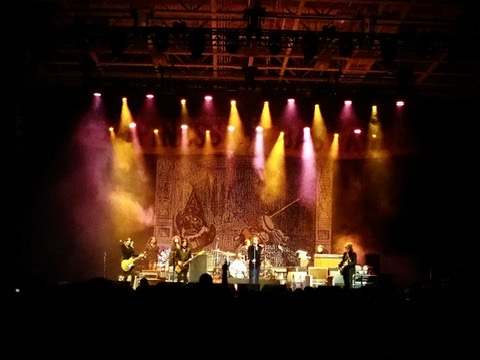Are High School Athletics More Important Than Academics?
The Atlantic Magazine’s cover story for its current issue asks whether Americans place too high a value on high school athletics and whether the perceived or real importance of athletics detracts from academics.
The report notes:
Sports are embedded in American schools in a way they are not almost anywhere else. Yet this difference hardly ever comes up in domestic debates about America’s international mediocrity in education. (The U.S. ranks 31st on the same international math test.) The challenges we do talk about are real ones, from undertrained teachers to entrenched poverty. But what to make of this other glaring reality, and the signal it sends to children, parents, and teachers about the very purpose of school?
With that cover story in mind, Moon News Cloud examines the amount of money selected area high schools devote to athletics, what their academic policies are vis-a-vis athletics, and the perception that parents, administrators and others have about athletics on the secondary level and at their respective schools.
The following schools were selected: Cathedral Prep in Erie, Grove City, Moon Area, Our Lady of the Sacred Heart and South Side Area in Beaver. This selection allowed for a comparison of regional private and public high schools. These also were high schools that the reporters were familiar with, either because they graduated from those institutions or they were in close proximity to where they live.
Money and Sports
| School |
South Side |
Moon Area |
Cathedral Prep |
Grove City Area |
OLSH |
|
Athletic Budget |
$422,000 |
$900,000 |
Not Provided |
$645,000 |
$350,000 |
|
Total Enrollment |
400 |
1,200 |
550 |
700 |
400 |
|
Cost per Student |
$1,055 |
$750 |
Indeterminable |
$921 |
$875 |
|
Classification |
Public |
Public |
Private |
Public |
Private |
|
NOTES |
Includes grades 7-12, and students often play more than one sport |
The enrollment data reflect the high school only |
The budget covers students in 7th through 12th grades |
Data provided by the school’s athletic directors or a district representative; some districts base their athletic budgets on middle school and high school athletics, but in all cases, the cost per student was based on high school attendance only
In evaluating the money spent by area high schools on athletics, it is important to remember that there are a variety of methods used in preparing the budget. For example, some school districts allot a lump sum of money that covers everything from high school sports to elementary sports in that district. That is the case in the Grove City Area School District, where this academic year the athletics budget is $645,000. Those dollars cover everything from salaries to training to dues, and they are not broken down sport by sport. Nevertheless, it is logical to conclude that the Grove City High School football team spends the most amount of money of any other sport, but that it also brings in more money than any other sport.
Grove City High School is home to slightly more than 700 students this academic year.
Wesley Phipps graduated from Grove City in 2012 and is now a sophomore on the Penn State wrestling team. “Grove City doesn’t spend enough on a lot of things, and athletics is one of them,” he said. “We don’t pay coaches enough; they are practically volunteers. A lot of facilities show a lack of pride in our sports, which are always competitive, and we don’t have enough staff to take care of and maintain the nice facilities we do have.”

Grove City High School football stadium; photo: Kayla Sample
At Moon Area High School, which has a student population of about 1,200, more than $900,000 will be spent this academic year on the school’s athletic teams, with more than $500,000 earmarked for salaries. The school’s basketball teams will cost $137,000, which includes $68,000 for salaries, while the football team will spend $121,000, of which $60,000 is set aside for salaries.
Luke and Dee Asaro, who are parents of a MAHS student, had differing opinions on that financial commitment to athletics. “It’s too much money,” he said. “I don’t know if it’s worth it. If we can afford it, maybe.”
Dee Asaro added, “It’s fine.”

Our Lady of the Sacred Heart athletic director Mike McDonald; photo courtesy: OLSH
Mike McDonald: “I wouldn’t say we pinch pennies, but we try not to add money for things that are not essential to the program”
At Our Lady of the Sacred Heart in nearby Coraopolis, the athletics budget tops out at $350,000 each year, and athletic director Mike McDonald says that covers salaries for coaches, equipment costs, officials’ fees, field rental, transportation and membership fees. Each student also pays a $200 activities fee that goes toward participating on any team or any extracurricular activity, such as musicals.
“I wouldn’t say we pinch pennies, but we try not to add money for things that are not essential to the program,” McDonald noted.
OLSH has a student population of around 400, and McDonald estimates that 40 to 45 percent of them take part in at least one sport.
According to numbers provided by John Sepe, the business manager for the South Side Area School District in Beaver County, that district will spend slightly more than $400,000 on athletics during this academic year, and that amount funds sports from 7th through 12th grades. Moon News Cloud was not provided details on how those dollars are broken down. Sepe adds that 530 students from grades 7 through 12 will take part in at least one sport this academic year.
The other high school — Cathedral Prep in Erie — examined in this story did not provide its athletic department figures to Moon News Cloud. There are about 550 students attending that school this year.

Cathedral Prep in Erie opened its new $8.8-million events center three years ago; photo courtesy: Cathedral Prep
Just three years ago, Cathedral Prep opened its new $8.8-million events center. The centerpiece is the school’s new football facility, which also is the home field for the Ramblers’ soccer, lacrosse and track teams. Last season, the Ramblers’ football team was the PIAA champion in AAA.
Athletics and Academics Policies
At South Side Area, where block scheduling permits students to take only four classes per semester, an athlete can be failing only one class in order to remain eligible to play. Joey Arrigo, who plays for the Rams football team, says coaches receive an updated list each week with names added to or taken off.
His mother, Judy, says she is comfortable with how the school balances academics and athletics. “I have seen examples of a commitment on the part of the high school to recognize and support both the sports programs and the academic programs,” she said.

Earlier this season, OLSH and South Side Area met on the football field, and OLSH won, 26-18; photo: Chelsea Weston
At Our Lady of the Sacred Heart, athletic officials are aware of the Pennsylvania Interscholastic Athletic Association (PIAA) rules, which require students to be passing core courses in order to play. However, the school also has initiated its own tougher standards. Athletic director McDonald reviews all student-athletes’ grades every Sunday and any athlete getting at least one F or three Ds in core or non-core courses is not eligible to play until those grades improve.
He noted that the academics policies for athletes also apply to any student interested in any extracurricular activity.
Brandon Adams graduated from OLSH in 2011. He believes his alma mater showed the proper balance between encouraging students to play sports but to first do well in their coursework. “Athletics are part of high school culture,” he said. “It can absorb most of your time, but you can still maintain your academic career.”
At another Catholic high school, Cathedral Prep in Erie, grade policies are spelled out on the school’s Website. Students’ grades are checked each Wednesday. If they are failing two or more classes, they have until the following Monday to improve their grade. If that doesn’t happen, then they are ineligible for all games. And coaches also have the authority to hold the player out of practice.
One Cathedral Prep graduate, Brian Wilwohl, says the school’s policies are enforced. “Prep holds all students, athletes and non-athletes, to the same grade standards,” he said. “Even if you don’t play a sport, the school will say you are ineligible” if you are not passing classes, and teachers must sign off on any athlete having a chance to play again.
Grove City student Jared Sample is well aware of the grade policies at his school. Any member of the football team getting at least one F cannot practice with the team. Instead that person runs laps, and they might run for the entire two-plus-hour practice. Any wrestler who is failing at least one class will spend the team’s practice working on homework with one of the team’s managers. Like OLSH, Grove City follows the PIAA rules regarding passing core courses in order to compete.
Moon Area High School adheres to the aforementioned PIAA rules. Are those strong enough? Dee Asaro, the parent of a MAHS student, doesn’t think so.
“Academics should come first, sports should come second,” she said. “You should have to pass more classes to play.”
What Does It Mean?
“You have to be a student first,” said OLSH’s McDonald. “We are an academic institution.” Nevertheless, he admits that without athletics, OLSH would lack the school spirit it has.
But one OLSH graduate wonders if that need for athletic spirit led to favoritism toward the athletes. “Everybody favored the star athletes and they were sometimes given the benefit of the doubt when it came to schoolwork and tardiness,” Kristin Suehr said.
One Grove City parent, Maribeth Harmon, says her son, who plays on the football team, is aware that if he doesn’t do well in the classroom that PIAA rules will force him to sit and not play. But she admits that during the off-season, her son often won’t try as hard to get good grades.
“I know during football season I don’t have to worry about his grades, but that isn’t the situation with every player,” Harmon added.
 Photo courtesy: Maribeth Harmon
Photo courtesy: Maribeth Harmon
Maribeth Harmon, left, mother of Grove City High School student-athlete: “I know during football season I don’t have to worry about his grades, but that isn’t the situation with every player”
But at least one Eagles’ athlete, Holly McGill, worries that too many athletes still end up failing despite being aware of the penalties for not doing well. “People still find a way to fail four core classes and they pay the price,” she added.
Bill Flanagan, the athletic director at Cathedral Prep in Erie, admits that sports and other extracurricular activities matter at that school. “That means competing in things such as the classroom, plays and performances, forensics and athletics,” he said. “Our fans, families, students and alums take great pride in what our student-athletes are accomplishing, and they relish in their success.”
Arrigo, the South Side Area football player, believes that his school’s commitment to seeing students succeed first in the classroom is having an unexpected effect. “Some teams don’t have as many players as they could,” he said. “It seems as though students don’t want to play sports because of the importance of school to them.”
“When your sports teams win, people hear about your school,” McDonald said. “So, they’re both really connected.”












